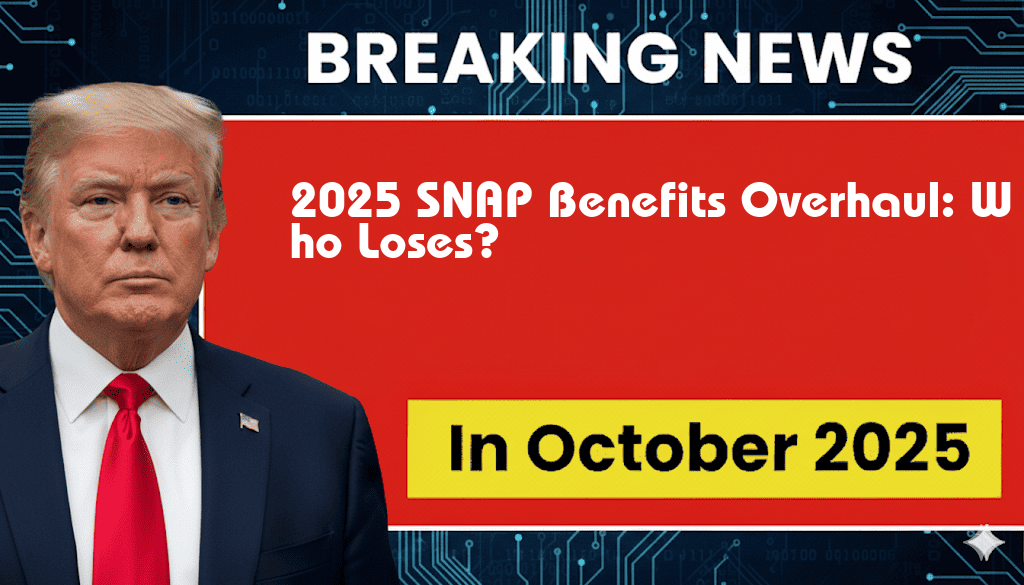The upcoming overhaul of the Supplemental Nutrition Assistance Program (SNAP) in 2025 is poised to impact millions of Americans currently relying on this vital assistance. With proposed changes aimed at reforming eligibility and benefit structures, many individuals and families are left wondering who will ultimately lose their benefits and what the implications will be. The anticipated adjustments, estimated to affect around 7 million recipients, could redefine assistance levels, with potential cuts reaching up to $3,000 per household annually. As legislators prepare for this significant shift, understanding the nuances of the reform and its potential consequences is crucial for recipients and advocates alike.
Understanding SNAP and Its Importance
SNAP, formerly known as food stamps, provides financial assistance to low-income individuals and families to help them purchase food. The program plays a pivotal role in combating food insecurity, particularly among vulnerable populations such as children, the elderly, and those with disabilities. In 2023, an estimated 42 million Americans participated in SNAP, relying on the program for essential nutrition.
The Proposed Overhaul for 2025
The 2025 SNAP overhaul is driven by a combination of budgetary pressures and a push for more efficient program management. Key aspects of the proposal include:
- Eligibility Restrictions: Stricter income and asset tests may be introduced, making it more challenging for some households to qualify.
- Benefit Reductions: Proposed cuts could reduce monthly benefits, significantly impacting those at the lower end of the income spectrum.
- Work Requirements: The overhaul may impose additional work requirements for able-bodied adults without dependents, complicating access for many.
Who Will Be Affected?
As legislators refine their proposal, various groups are likely to experience changes in their SNAP benefits. Some of the most affected demographics include:
- Low-Income Families: Families with fluctuating incomes may find it harder to qualify under stricter eligibility criteria.
- Part-Time Workers: Individuals working part-time may see a reduction in their benefits if their earnings exceed new thresholds.
- Disabled Individuals: Changes to asset limits may disproportionately affect those with disabilities who struggle to meet new requirements.
Projected Financial Impact
The financial implications of the proposed SNAP changes are significant. A table below outlines the anticipated effects on different household types:
| Household Type | Current Average Monthly Benefit | Projected Monthly Benefit Post-Overhaul | Annual Loss |
|---|---|---|---|
| Single Adult | $250 | $200 | $600 |
| Single Parent with One Child | $500 | $400 | $1,200 |
| Family of Four | $800 | $600 | $2,400 |
Criticism and Support for the Overhaul
The proposed changes have drawn mixed reactions from policymakers, advocacy groups, and the public. Supporters argue that reform is necessary for reducing government spending and ensuring that benefits go to those who truly need them. Conversely, critics contend that the alterations could exacerbate food insecurity and hardship among already vulnerable populations.
Advocacy Response
Organizations such as the Feeding America network and the No Kid Hungry campaign are mobilizing to oppose the overhaul. They emphasize the critical role SNAP plays in alleviating hunger and advocate for maintaining or expanding benefits rather than cutting them.
Moving Forward
As the 2025 SNAP overhaul approaches, it is essential for recipients and advocates to stay informed about proposed changes and their potential impact. Engaging with local representatives and participating in public discussions can help ensure that the voices of those most affected are heard in the decision-making process. With food security at stake, the upcoming legislative changes represent a significant moment in the ongoing conversation about poverty, assistance, and nutrition in America.
Frequently Asked Questions
What is the SNAP benefits overhaul scheduled for 2025?
The SNAP benefits overhaul in 2025 is a significant revision of the Supplemental Nutrition Assistance Program aimed at adjusting eligibility requirements and benefit amounts, impacting millions of recipients nationwide.
Who will be affected by the changes to SNAP benefits?
The changes are anticipated to affect low-income families, individuals, and seniors who rely on SNAP assistance for their nutritional needs, potentially leading to a reduction in benefits for some recipients.
What are the main reasons for the SNAP benefits overhaul?
The main reasons for the overhaul include addressing rising food insecurity, updating eligibility criteria, and ensuring that the program remains sustainable and effective in providing for those in need.
How will the changes impact current SNAP recipients?
Current SNAP recipients may face a loss of benefits or a decrease in the amount they receive, depending on the new eligibility criteria and the adjustments made to the program in 2025.
Where can I find more information about the SNAP benefits changes?
More information about the upcoming SNAP benefits changes can be found on the official USDA website and through local food assistance programs that provide updates to affected individuals and families.

Leave a Reply